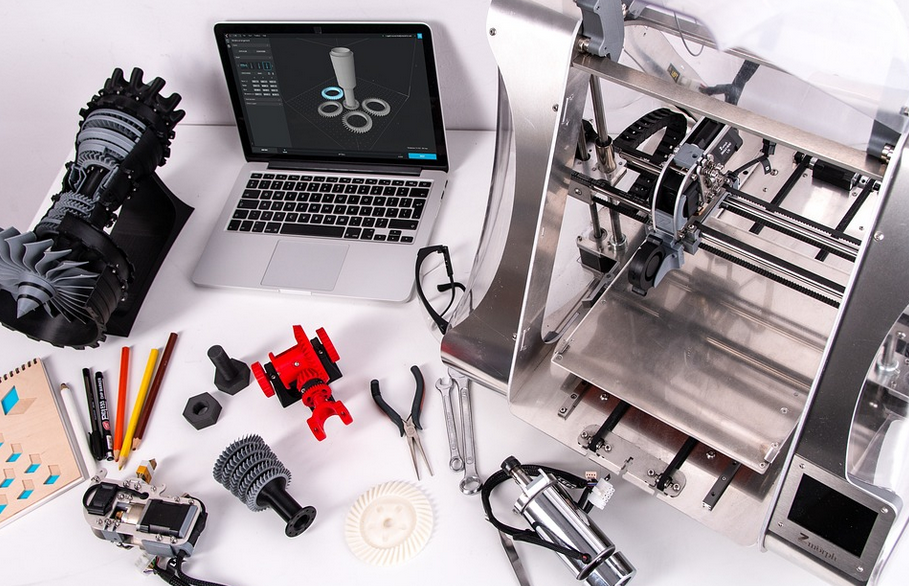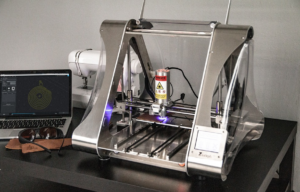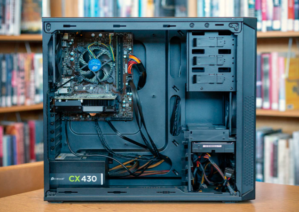Best Practices for Interacting with New Followers Gained Through Purchase
Gaining new followers through purchases is an exciting milestone for any brand. For example, when you gain new Instagram followers, it’s a signal that your products resonate with consumers and spark interest. However, the journey doesn’t end at the sale. Engaging these new followers can turn a one-time client into a loyal advocate for your brand.
But how do you navigate this crucial phase? It’s all about interaction. You want to create meaningful connections without overwhelming them or coming off as insincere. By employing best practices when interacting with your new audience, you can foster relationships that lead to long-term loyalty and increased engagement.
Let’s dive into some strategies that will help you interact authentically and keep those connections thriving!
Engage Authentically
 Engaging authentically sets the foundation for a lasting relationship with your new followers. People appreciate genuine interactions. When you respond to comments or messages, take the time to personalize your replies. Share stories that reflect your brand’s values and mission. This transparency builds trust and makes followers feel more connected to you.
Engaging authentically sets the foundation for a lasting relationship with your new followers. People appreciate genuine interactions. When you respond to comments or messages, take the time to personalize your replies. Share stories that reflect your brand’s values and mission. This transparency builds trust and makes followers feel more connected to you.
Don’t just focus on selling; show appreciation for their support. A simple thank-you can go a long way in making them feel valued. Additionally, share behind-the-scenes content that showcases real moments from your business journey. This humanizes your brand and fosters deeper connections.
Create Relevant Content
Creating relevant content is crucial for retaining the interest of new followers. Tailor your posts to align with their needs and interests. This shows you value them as people, not just numbers. Consider sharing behind-the-scenes glimpses of your brand or insights related to recent purchases. Such content resonates deeply with followers who have engaged through a transaction. Use visuals that are appealing and relatable. High
-quality images or videos can significantly enhance engagement levels. They invite interaction and encourage followers to share their thoughts. Don’t shy away from trends either. Incorporating current events or popular culture can make your content feel fresh and exciting, drawing in more engagement from those new faces on your feed.
Avoid Spammy Behavior
 When interacting with new followers, it’s crucial to avoid any spammy behavior. Overloading their feeds with constant promotions or generic messages can push them away. Instead of direct sales pitches, focus on building a relationship. Share valuable information that resonates with your audience’s interests. This fosters trust and encourages genuine engagement.
When interacting with new followers, it’s crucial to avoid any spammy behavior. Overloading their feeds with constant promotions or generic messages can push them away. Instead of direct sales pitches, focus on building a relationship. Share valuable information that resonates with your audience’s interests. This fosters trust and encourages genuine engagement.
Keep an eye on how often you post promotional content. A good consideration is 80/20: 80% engaging posts and only 20% promotional material. Be mindful of automated responses, too. While they save time, they can feel impersonal and robotic. Personalized replies go a long way in making followers feel valued.
Use Polls and Questions
Polls and questions are an effective way to engage with your new followers. They invite participation and can spark meaningful conversations. When you ask a question, you’re not just seeking answers but showing that you value their opinions. Create polls related to your niche or recent trends. This boosts engagement and provides insights into what your …



 Crafting engaging video scripts is much easier, thanks to ChatGPT. This AI tool can help you brainstorm content ideas tailored to your niche and audience preferences. Need a catchy opening line or an intriguing topic? Just ask! ChatGPT can generate multiple suggestions in seconds, saving you hours of brainstorming time. But it doesn’t stop there. You can collaborate with the AI to refine your script’s tone and style, ensuring it aligns perfectly with your brand voice.
Crafting engaging video scripts is much easier, thanks to ChatGPT. This AI tool can help you brainstorm content ideas tailored to your niche and audience preferences. Need a catchy opening line or an intriguing topic? Just ask! ChatGPT can generate multiple suggestions in seconds, saving you hours of brainstorming time. But it doesn’t stop there. You can collaborate with the AI to refine your script’s tone and style, ensuring it aligns perfectly with your brand voice. Canva’s AI Magic Design is a game changer for YouTubers looking to create stunning thumbnails. Thumbnails are your video’s first impression. They need to grab attention quickly. With Canva’s intuitive interface, you can whip up eye-catching designs in no time. The AI suggestions help you choose the right layout and colors that resonate with your audience.
Canva’s AI Magic Design is a game changer for YouTubers looking to create stunning thumbnails. Thumbnails are your video’s first impression. They need to grab attention quickly. With Canva’s intuitive interface, you can whip up eye-catching designs in no time. The AI suggestions help you choose the right layout and colors that resonate with your audience.




 DHCP, also known as Dynamic Host Configuration Protocol, is a fundamental networking protocol that plays a crucial role in enabling devices to connect to a network and obtain necessary IP configurations automatically. It simplifies the process of assigning IP addresses, subnet masks, default gateways, and other network parameters to devices within a network.
DHCP, also known as Dynamic Host Configuration Protocol, is a fundamental networking protocol that plays a crucial role in enabling devices to connect to a network and obtain necessary IP configurations automatically. It simplifies the process of assigning IP addresses, subnet masks, default gateways, and other network parameters to devices within a network.



 Let’s dive into the first step – extraction. It involves gathering and analyzing data from a target system to gain insights into its inner workings. This process requires careful observation, documentation, and investigation. To begin with, you need to thoroughly examine the software or hardware you wish to reverse engineer. Take note of its features, functions, and any visible patterns. This initial analysis will help you understand how different components interact with each other.
Let’s dive into the first step – extraction. It involves gathering and analyzing data from a target system to gain insights into its inner workings. This process requires careful observation, documentation, and investigation. To begin with, you need to thoroughly examine the software or hardware you wish to reverse engineer. Take note of its features, functions, and any visible patterns. This initial analysis will help you understand how different components interact with each other.
 Once you have completed the modeling stage of reverse engineering, it is time to move on to the review phase. This is a crucial step where you evaluate and analyze your findings. During the review process, take a close look at the extracted information and the models you have developed. Check for any inconsistencies or errors that may have occurred during the extraction or modeling stages.
Once you have completed the modeling stage of reverse engineering, it is time to move on to the review phase. This is a crucial step where you evaluate and analyze your findings. During the review process, take a close look at the extracted information and the models you have developed. Check for any inconsistencies or errors that may have occurred during the extraction or modeling stages.



 The last trend we will discuss is sustainability. As the world becomes increasingly aware of the environmental impact of traditional manufacturing methods, more and more people are turning to 3D printing to reduce their carbon footprint. 3D printers use less material than traditional manufacturing methods, making them much more eco-friendly. Additionally, 3D-printed objects can be recycled and reused, making them a great way to reduce waste. 3D printing is also often used to produce biodegradable materials, reducing its environmental impact. Many companies are now embracing 3D printing in their sustainable production processes, and this trend will likely continue to grow.
The last trend we will discuss is sustainability. As the world becomes increasingly aware of the environmental impact of traditional manufacturing methods, more and more people are turning to 3D printing to reduce their carbon footprint. 3D printers use less material than traditional manufacturing methods, making them much more eco-friendly. Additionally, 3D-printed objects can be recycled and reused, making them a great way to reduce waste. 3D printing is also often used to produce biodegradable materials, reducing its environmental impact. Many companies are now embracing 3D printing in their sustainable production processes, and this trend will likely continue to grow.
 Ergonomics is one of the most important things to consider when choosing a gaming controller. You want a comfortable controller to hold for long periods, as you will likely be using it for hours. Look for a controller that fits well in your hand and has buttons and joysticks that are easy to reach.
Ergonomics is one of the most important things to consider when choosing a gaming controller. You want a comfortable controller to hold for long periods, as you will likely be using it for hours. Look for a controller that fits well in your hand and has buttons and joysticks that are easy to reach. Another thing to consider is whether you want a wireless or wired gaming controller. Wireless controllers are more convenient because you don’t have to worry about being tethered to your gaming system. However, they can be more expensive and may require batteries. Wired controllers are less expensive and don’t need batteries, but can be a pain if the cord gets in the way of your gameplay.
Another thing to consider is whether you want a wireless or wired gaming controller. Wireless controllers are more convenient because you don’t have to worry about being tethered to your gaming system. However, they can be more expensive and may require batteries. Wired controllers are less expensive and don’t need batteries, but can be a pain if the cord gets in the way of your gameplay.
 One of the most critical keys to high-traffic
One of the most critical keys to high-traffic  Ultimately, your mobile app needs to be easy to use. People will quickly get frustrated and stop using it if it’s not. One of the most critical aspects of ease-of-use is navigation. Your app needs to have a clear and intuitive navigation system. People should be able to find what they’re looking for without trouble. If your app is difficult to navigate, you’re going to lose a lot of users.
Ultimately, your mobile app needs to be easy to use. People will quickly get frustrated and stop using it if it’s not. One of the most critical aspects of ease-of-use is navigation. Your app needs to have a clear and intuitive navigation system. People should be able to find what they’re looking for without trouble. If your app is difficult to navigate, you’re going to lose a lot of users.
 A gaming headset is a must-have for any gamer. If you want to get the most out of your gaming experience, then you need to be able to hear everything that is going on around you. A good gaming headset will provide you with surround sound and clear audio to hear every footstep and explosion. Plus, they can also help to reduce noise and distractions so that you can focus on the game. In addition to providing great audio, gaming headsets can also provide features such as LED lighting, vibration, and microphone control.
A gaming headset is a must-have for any gamer. If you want to get the most out of your gaming experience, then you need to be able to hear everything that is going on around you. A good gaming headset will provide you with surround sound and clear audio to hear every footstep and explosion. Plus, they can also help to reduce noise and distractions so that you can focus on the game. In addition to providing great audio, gaming headsets can also provide features such as LED lighting, vibration, and microphone control. An ergonomic chair is another must-have for any gamer. If you are going to spend hours playing video games, you need to be sitting in a comfortable and supportive chair. An ergonomic chair will help reduce fatigue and pain, so you can game for longer without feeling uncomfortable. In addition to being comfortable, an ergonomic chair can also be adjustable, so you can find the perfect fit for your body.
An ergonomic chair is another must-have for any gamer. If you are going to spend hours playing video games, you need to be sitting in a comfortable and supportive chair. An ergonomic chair will help reduce fatigue and pain, so you can game for longer without feeling uncomfortable. In addition to being comfortable, an ergonomic chair can also be adjustable, so you can find the perfect fit for your body. If you want to get the most out of your gaming experience, you need to use a good set of stereo speakers. Compared to traditional laptop speakers, stereo speakers will provide you with superior sound quality and clarity. This is essential for enjoying immersive and realistic gaming audio. For instance, if you are playing a game that has sound effects and music, then you will be able to hear them much more clearly with stereo speakers. In addition to enhancing your gaming audio, stereo speakers can also improve your overall audio experience when listening to music and movies.
If you want to get the most out of your gaming experience, you need to use a good set of stereo speakers. Compared to traditional laptop speakers, stereo speakers will provide you with superior sound quality and clarity. This is essential for enjoying immersive and realistic gaming audio. For instance, if you are playing a game that has sound effects and music, then you will be able to hear them much more clearly with stereo speakers. In addition to enhancing your gaming audio, stereo speakers can also improve your overall audio experience when listening to music and movies.
 You need to consider what type of photography you want to use the camera for. Are you looking to take pictures of landscapes, portraits, or action shots? Each type of photography requires different features from a camera.
You need to consider what type of photography you want to use the camera for. Are you looking to take pictures of landscapes, portraits, or action shots? Each type of photography requires different features from a camera. Another critical factor to consider is image quality. If you are a professional photographer, you will need a camera that takes high-quality images.
Another critical factor to consider is image quality. If you are a professional photographer, you will need a camera that takes high-quality images.
 The antenna is the most important part of your two-way radio, and if it’s not working properly, your radio will not function correctly. There are a few things you can do to troubleshoot a malfunctioning antenna. One is by checking the connector on the end of the antenna for dirt or moisture. Clean it off with a clean cloth if necessary. If that doesn’t work, try adjusting the angle of the antenna. You can also try replacing the antenna if neither of those solutions works.
The antenna is the most important part of your two-way radio, and if it’s not working properly, your radio will not function correctly. There are a few things you can do to troubleshoot a malfunctioning antenna. One is by checking the connector on the end of the antenna for dirt or moisture. Clean it off with a clean cloth if necessary. If that doesn’t work, try adjusting the angle of the antenna. You can also try replacing the antenna if neither of those solutions works.
 The first step to choosing the best online computer game is making sure it works with your PC. Ensure you go over the system requirements for whatever game you are considering downloading or buying. If a game says that it needs at least an Intel Core i-2300 processor, then that means if your laptop only has an AMD E-450 processor, then the game probably isn’t compatible with your computer.
The first step to choosing the best online computer game is making sure it works with your PC. Ensure you go over the system requirements for whatever game you are considering downloading or buying. If a game says that it needs at least an Intel Core i-2300 processor, then that means if your laptop only has an AMD E-450 processor, then the game probably isn’t compatible with your computer. Online reviews will give an idea of what to expect when playing certain game titles and how they compare to similar ones available in the industry. While some players may not find time to read each one, there is no harm in looking at them before buying any latest game.
Online reviews will give an idea of what to expect when playing certain game titles and how they compare to similar ones available in the industry. While some players may not find time to read each one, there is no harm in looking at them before buying any latest game.


 The free version of this app is perfect for anyone who wants to set their macro goals and manage them accordingly. Your trainer can continuously update your macro goals through the AI app. You can set multiple nutrition goals, which means you can have different macros at different times. This is useful for those who want to train during the day rather than on the weekend. This app is also great for those who prefer fast carbs and alternate meals in the evening. This program is more focused on strength training and will introduce you to calisthenics. Each session lasts between 5 and 20 minutes, everyone can fit it into their day. You’ll also find lots of healthy recipes and exercises to do at home.
The free version of this app is perfect for anyone who wants to set their macro goals and manage them accordingly. Your trainer can continuously update your macro goals through the AI app. You can set multiple nutrition goals, which means you can have different macros at different times. This is useful for those who want to train during the day rather than on the weekend. This app is also great for those who prefer fast carbs and alternate meals in the evening. This program is more focused on strength training and will introduce you to calisthenics. Each session lasts between 5 and 20 minutes, everyone can fit it into their day. You’ll also find lots of healthy recipes and exercises to do at home.

 You must know the basics of these records. Almost all Android users are not fully aware of the importance and result of APK files. Even though it is a simple fact that we dwell on APK files from time to time with no small amount, it can still be very valuable to find out just in case you would need them later on in case you want to download more applications for your Android device. APK files are already in the software found in the Android Market.
You must know the basics of these records. Almost all Android users are not fully aware of the importance and result of APK files. Even though it is a simple fact that we dwell on APK files from time to time with no small amount, it can still be very valuable to find out just in case you would need them later on in case you want to download more applications for your Android device. APK files are already in the software found in the Android Market.
 America is the country that produces the most pollutants and pollutes the entire world. A remote Indian village has natural
America is the country that produces the most pollutants and pollutes the entire world. A remote Indian village has natural  Now, the current market is full of electric-powered bicycles and involves a lot of green technology involvement. Ion toothbrushes are produced from titanium dioxide. Negative ions are created when titanium reacts with natural or artificial saliva and the mild of the mouth. These negative ions kill the germs that are in your mouth and stick to your teeth. Imagine the savings on the tools used to make toothpaste when using this eco-friendly technology.
Now, the current market is full of electric-powered bicycles and involves a lot of green technology involvement. Ion toothbrushes are produced from titanium dioxide. Negative ions are created when titanium reacts with natural or artificial saliva and the mild of the mouth. These negative ions kill the germs that are in your mouth and stick to your teeth. Imagine the savings on the tools used to make toothpaste when using this eco-friendly technology.








 To start with, you need to learn which sort of design expertise your prospective design firm has. Has the internet design firm created sites like yours? Making your site will take a while and work. An experienced web design firm will have an incredible portfolio of online sites they’ve created for various clients—request links to other sites that the design firm has grown and checked out every one of these.
To start with, you need to learn which sort of design expertise your prospective design firm has. Has the internet design firm created sites like yours? Making your site will take a while and work. An experienced web design firm will have an incredible portfolio of online sites they’ve created for various clients—request links to other sites that the design firm has grown and checked out every one of these. Make sure you ask your prospective web design firm about the procedure they use. A seasoned online professional must understand the distinction between both of these theories. Many advertising and marketing businesses specialize in site design, which doesn’t demand web development abilities. Simultaneously, many companies that design sites are still outsourced the job’s creative area. Learn from the start what the procedure is for your company which you’re thinking about.
Make sure you ask your prospective web design firm about the procedure they use. A seasoned online professional must understand the distinction between both of these theories. Many advertising and marketing businesses specialize in site design, which doesn’t demand web development abilities. Simultaneously, many companies that design sites are still outsourced the job’s creative area. Learn from the start what the procedure is for your company which you’re thinking about.
 This
This  Moment monitors just how much you use your telephone or pill every day, and the outcomes can be deciphered. As soon as you understand how much you are using specific programs, you may set daily limits and find a notification or drive to quit working using a flood of alarms. There is a”Moment Family” alternative, which lets you keep track of your family’s use –and even place limitations during homework or dinner time.
Moment monitors just how much you use your telephone or pill every day, and the outcomes can be deciphered. As soon as you understand how much you are using specific programs, you may set daily limits and find a notification or drive to quit working using a flood of alarms. There is a”Moment Family” alternative, which lets you keep track of your family’s use –and even place limitations during homework or dinner time. For all those folks who need an enormous push in regards to cutting back on display time, Flipd might be the ideal program for your job. As soon as you lock specific programs on your telephone for a predetermined period, there is no going back. You could have the ability to disable different programs by restarting your telephone, but maybe not Flipd, which makes it the ultimate diversion stopper. It may sound extreme, but as soon as you get your job finished, you’ll certainly be appreciative of the time that you invested distraction-free.
For all those folks who need an enormous push in regards to cutting back on display time, Flipd might be the ideal program for your job. As soon as you lock specific programs on your telephone for a predetermined period, there is no going back. You could have the ability to disable different programs by restarting your telephone, but maybe not Flipd, which makes it the ultimate diversion stopper. It may sound extreme, but as soon as you get your job finished, you’ll certainly be appreciative of the time that you invested distraction-free.
 First up is the processor. Having a financing processor, I will make it practical for you to redesign later hang and have a beast of a framework. This processor is the Intel Core processor that is i5-8600K. This chip contains six centers and six strings of registering power and sports a base clock of 3.6GHz and a most incredible turbo lift to 4.3GHz in the case. This processor doesn’t join a framework you’ll need to buy. The Core i5-8600K works in a 95-watt TDP and is comprised of a 9MB reserve. The CPU will have pictures that are the Intel UHD 630 pictures.
First up is the processor. Having a financing processor, I will make it practical for you to redesign later hang and have a beast of a framework. This processor is the Intel Core processor that is i5-8600K. This chip contains six centers and six strings of registering power and sports a base clock of 3.6GHz and a most incredible turbo lift to 4.3GHz in the case. This processor doesn’t join a framework you’ll need to buy. The Core i5-8600K works in a 95-watt TDP and is comprised of a 9MB reserve. The CPU will have pictures that are the Intel UHD 630 pictures.
 Major monitoring children applications offer many facilities, such as time limitation and harmful words, images, and videos on the children’s device. It also helps to monitor behavior while keeping the children’s privacy. Another usage involves location monitoring and various applications limitation when it is essential.
Major monitoring children applications offer many facilities, such as time limitation and harmful words, images, and videos on the children’s device. It also helps to monitor behavior while keeping the children’s privacy. Another usage involves location monitoring and various applications limitation when it is essential.  This app has all the features a parent can request as their mobile gadget management provider. It also can control many services on various gadgets. Sure, a parent cannot handle to spy 24 hours of their child’s mobile usage. Still, parents are at ease with having proper control app to ensure their child fairly uses their gadgets with the help of all the features they offer, such as application monitoring, web filtering, and location.
This app has all the features a parent can request as their mobile gadget management provider. It also can control many services on various gadgets. Sure, a parent cannot handle to spy 24 hours of their child’s mobile usage. Still, parents are at ease with having proper control app to ensure their child fairly uses their gadgets with the help of all the features they offer, such as application monitoring, web filtering, and location. 
 There are many reasons why this mistake will surface in your systems, such as damaged documents, corrupt configurations, or document misplacement. We have discovered that the most frequent problem is the game put an obsolete version of this document on your PC. But in case you’ve got many video games set up on your system, you can’t manage to find this
There are many reasons why this mistake will surface in your systems, such as damaged documents, corrupt configurations, or document misplacement. We have discovered that the most frequent problem is the game put an obsolete version of this document on your PC. But in case you’ve got many video games set up on your system, you can’t manage to find this  The first thing you need to look at when repairing this mistake is to search for the present Mss32.dll document on your computer. A whole lot of times, this error is a result of the file being labeled missing on your system. To assess if this is the origin of the malfunction on your PC, you need first to discover the document and, if need be, possibly relocate it somewhere else or install a brand new one on your system. The very first step to do so is to click Start on your Windows Bar.
The first thing you need to look at when repairing this mistake is to search for the present Mss32.dll document on your computer. A whole lot of times, this error is a result of the file being labeled missing on your system. To assess if this is the origin of the malfunction on your PC, you need first to discover the document and, if need be, possibly relocate it somewhere else or install a brand new one on your system. The very first step to do so is to click Start on your Windows Bar.
 The program is undetectable by the individual in whose phone it’s been presented. It’s an establishment that completed the
The program is undetectable by the individual in whose phone it’s been presented. It’s an establishment that completed the 

 Color space controls in Lightroom help you solve the most common color problems. Using the white balance controls, including the Temp and Tint sliders, neutralizes unwanted color casts and makes the colors look more realistic. If a photo’s color looks dull, make them more intense with the Vibrance or Saturation sliders.
Color space controls in Lightroom help you solve the most common color problems. Using the white balance controls, including the Temp and Tint sliders, neutralizes unwanted color casts and makes the colors look more realistic. If a photo’s color looks dull, make them more intense with the Vibrance or Saturation sliders.
